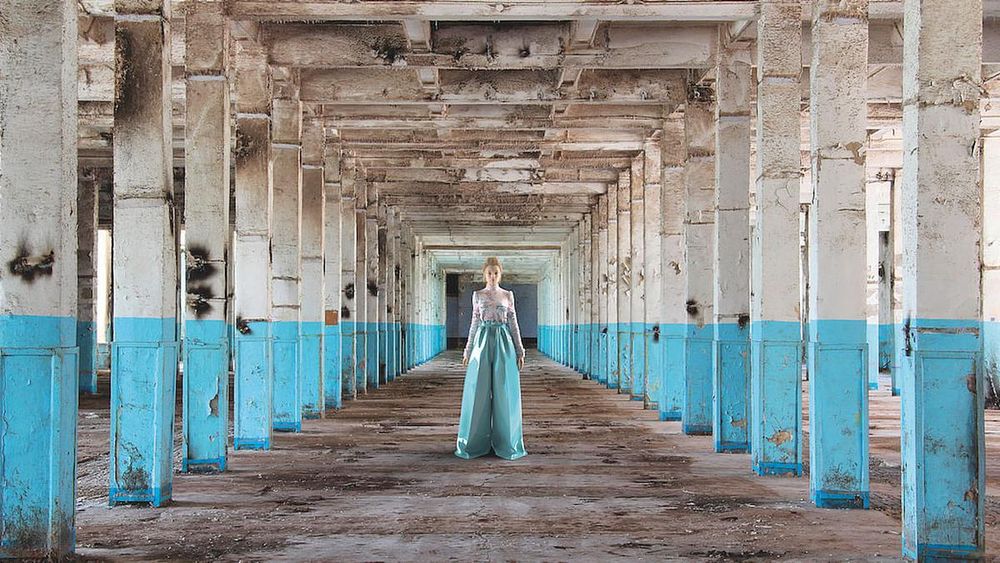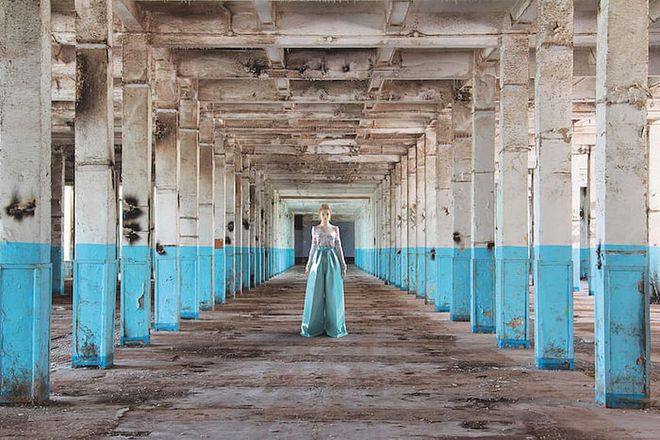Everything You Wanted To Know About NFTs
NFT: The digital token that’s taking the world by storm and upturning the meaning of face value.


NFTs of 'Neighbours Keeping a Socially Acceptable Distance' and other works by digital artist and BAZAAR collaborator The Next Most Famous Artist are available at NFT marketplace opensea.io (Photo: Hafiz Karim)
You couldn’t have missed the headlines. On 11 March, an artwork by digital artist Beeple (aka Michael Joseph Winkelmann), titled Everydays: The First 5000 Days, went under the hammer at Christie’s for a whopping US$69.3 million (nearly S$93 million). The sale saw Christie’s become the first major auction house to offer a digital work with a unique NFT (or non-fungible token), and to do so through the cryptocurrency Ether. A little over a week later, the headlines hit closer to home when it was revealed that the buyer of the artwork was Singapore-based crypto-entrepreneur Vignesh Sundaresan, aka Metakovan—putting this island at the front of a new tech craze that’s sweeping across the digital world.
Related article: 12 Celebrities Who Have Joined The NFT Hype Train
And it’s not just cultural bastions such as Christie’s or even Italy’s Uffizi Gallery (it sold a Michelangelo NFT for US$170,000 in May) that are making the NFT headlines either. With Grimes having reportedly sold more than US$5.8 million worth of tokenised artworks in her first NFT drop (the sale lasted just 20 minutes) and model-cum-actress Cara Delevingne looking to cash in with an NFT video of her talking about her vagina (it’s for a good cause), NFT, complete with all its meta-sounding technobabble, has officially hit the mainstream. So if you’re looking to understand what an NFT is exactly and what it means when something is non-fungible, then let’s recap the googleables.
Related article: Is It Safe To Invest In Cryptocurrencies Like Bitcoin? And What Are NFTs?

Luxury brands are also getting into the NFT scene. Here, Food Cart for Time Travel, one of the conceptual NFT works from RIMOWA’s collaboration with NUOVA. (Photo: RIMOWA)
Cold, hard cash and cryptocurrencies are fungible, meaning that they’re mutually interchangeable and are able to be traded or exchanged for one another because they’re equal in value. One US dollar is worth another US dollar; one Ether is worth another Ether. So a non-fungible token is therefore not fungible in the same way that, for example, a dress from ZARA is not exchangeable for a dress by ALAÏA—they are not equal in value.
Related article: World Beatboxing Phenom Dharni On Breaking Rules, NFTS And His Next Big Crypto Move
In other words, an NFT is essentially a unique and, consequently, non-interchangeable digital certificate of authenticity and provenance. Put that in the context of the art marketplace that has suddenly exploded with them and the main question many people ask is: Why would anyone want to pay for something that can be screencapped and shared innumerable times?

A still from “CHAOS+”, an NFT collaboration by photographer Wing Shya and singer Eric Chou comprising five works, of which the first sold for about US$28,100. (Photo: Wing Shya and Eric Chou)
The simple answer is that an NFT isn’t actually the art itself. Neither the Mona Lisa poster you purchased from the Louvre gift shop nor the little statue of Michelangelo’s David your mother brought back from the Aeroporto di Firenze are the actual artworks themselves—they are merely tokens of the works they represent.
American artist, writer, critical thinker and Post-Internet genius Brad Troemel provides a great analogy in his The NFT Report video: “Two people are standing in a house at the same time. [One] is the homeowner and the other is the guest. Functionally speaking, the guest can make use of the house in every way the owner can... but what the guest cannot do is sell the house, because [he or she lacks] the contractual right to do so.”
An NFT can then be seen as the deed for your digital property. It states who made the work, who currently owns it and how much was paid for it. Every time the work is bought and sold, it is entered into the digital ledgers; the blockchain technology records all of the receipts. With all this, the rise of the NFT means that some of the power customarily held in the ironclad grip of art dealers and curators, galleries and museums is returning to creators. (As for the buyers, they get, well, bragging rights, much like they would for an original Monet or Warhol.)

Singapore-based virtual fashion label republiqe.com sells NFTs of its designs on NFT platform Rarible. (Photo: republiqe.com)
Singapore-based experimental new-media artist George Galanakis (aka Radarboy3000), who founded CryptoArt Week Asia (set to run from 9 to 17 July; cryptoartweekasia.com), is quick to define the rise of NFT art as a movement: “NFTs are disrupting and making us rethink the art economy. More importantly, they’re creating an art movement that is as significant as any in history. As an artist, this gives me the space to create more, experiment, and not just [be working] for agencies—where I’m often seen as a one-dimensional worker, not a multi-faceted artist.”
Singaporean digital artist Hafiiz Karim (@thenextmostfamousartist) reaffirms this. “I think NFTs have empowered artists such as myself to be more autonomous in showcasing their work; artists can control the price of their work as well as the resale profits made by collectors in the secondary market. NFTs have also changed the way digital art is valued, sold and collected. Digital art has had a long-standing issue of proving authenticity and ownership.”
So the next time you’re looking to dabble in the art market, why not cop a piece of pop culture history instead? Fancy yourself a Nyan Cat-like meme (which sold for about US$590,000 in February)? Or how about a piece of technological history such as Twitter CEO Jack Dorsey’s maiden tweet (sold for US$2.9 million in March)? With NFTs applying to any digital representation of the tangible and intangible—from art and GIFs to designer clothes and sneakers, music and sports highlight reels—all you have to do is see where your interest lies and decide how much you’re willing to pay for it.
It’s an exciting world where people are now able to own the viral power of digital works: Not only is their impact being quantified, but their creators are now finally able to be credited and compensated for the use of the works that others in the food chain have long been making bank from.
So forget about market shares, a super yacht or a property. The new flex is to swing a custom-blinged Apple Watch face around your neck to showcase your NFT collection. Because in 2021, this is how we ball.